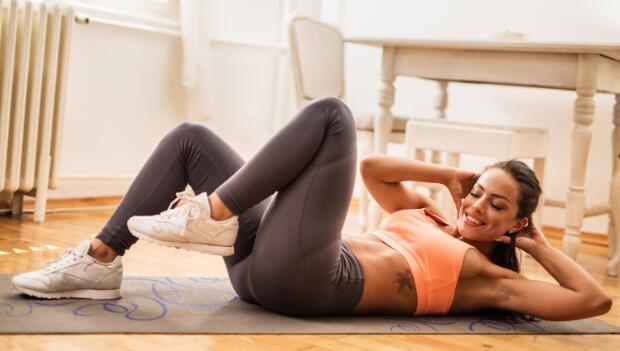
Cr-r-runch. Feel the burn. The ache. The surprise of discovering stomach muscles you never knew you had.
For the past month, gyms everywhere have been packed with people trying to stick with their New Year's resolutions to get in shape. Whether you prefer lifting weights, spinning or swimming, nearly everyone attempts a few crunches at some point in a workout.
null Events Near You
But are you crunching correctly?
Fitness experts warn that attempting crunches the wrong way could lead to backaches, muscle cramps or other problems. (see "Common mistakes" below). Plus, if you don't do them right, you won't see results.
First of all, if you're still doing sit-ups, stop. There's a reason why people do crunches now instead. Traditional sit-ups can pull at the lower back and neck muscles, or even kick the hip flexors into action when the abs are what you want to feel working.
Lynn Merges, a personal fitness trainer at Gold's Gym in York, says she tells her clients to focus on the area they want to work. "Mind in the muscle,' I always say."
Steps
1. Lie down with your back flat to the floor.
2. Elevate your feet so your knees are at a 90-degree angle to your body. It may be easier to rest your feet on a chair, or keep them on the floor and just bend your knees.
3. Cross your hands in front of your chest. For more advanced crunches, put your hands behind your head, but with the fingertips lightly touching the head, not clasping the head or neck.
4. Make sure there is a fist's worth of space between your chin and chest.
5. Draw your belly button in to the base of your spine.
6. Sit up until your elbows or chest reach your knees. Be careful to use abdominal rather than back, leg or neck muscles.
7. Exhale as you sit up. Inhale as you lie down.
8. Do two or three sets of 10 to 15 repetitions each. Stretch between sets.
Variations
Crunches for the obliques
1. Lie down as if you were doing a regular crunch, elevating feet off the floor so your knees are at a 90-degree angle to your body.
2. Cross your legs so that the ankle of your left leg is resting in front of the knee of your right leg and it looks like the number 4.
3. Cross your arms in front of your chest.
4. Lift and rotate the left shoulder toward the right knee, focusing on decreasing the distance between the left rib cage and the right hip.
5. Repeat 10-15 times.
6. Switch your legs around and repeat to tone the other side.
To decrease difficulty
Those who are overweight or out of shape may want to begin by doing hip rolls or tummy tucks before progressing to crunches.
1. Lie down as if you were going to do a regular crunch and roll the hips back against the floor, tucking the tummy in against the floor. This will begin to activate the stomach muscles.
To increase difficulty
Pregnant women
If you are pregnant, consult your doctor or fitness trainer before doing crunches since exercising while lying on your back can increase weight on the pelvic cavity.
Common mistakes
Holding your breath
Merges says your breathing technique while doing crunches is vital. "You need the oxygen to circulate through the blood and go to the muscle," she says. "If you're holding your breath, you could get cramps or get tired quicker, and you don't want that."
Going too fast
Abdominal exercises should be done in a steady, gradual manner with slow and controlled movements that are never jerky.
Using leg, back or neck muscles to pull you up
"All the pull should come from the abdominals, not the neck," Merges says. "If your belly button is down, you're going to be pulling from the abdominals."
Merges says abdominal exercises of some sort should be part of everyone's workout. They improve posture, stabilize the core of the body and contribute to a healthy back.
"When you understand how vital it is ... (your abdominal area) basically holds you up," she says. "It's the center of your being."
Amy Rawhouser Erdlen, physical director of the York and Southern York County YMCA, says most people want to improve the way their stomach looks.
"Flat abs are extremely hard to get," she says. "You almost have to have a genetic disposition to have that six-pack look, but you can improve what you do have."
Both Erdlen and Merges caution that all the crunches in the world won't do much good if they're not accompanied by cardiovascular exercise to take off layers of fat covering the stomach muscles.
"(Crunches) will draw your abdominals in, but it won't take the fat off around the abdominals," Merges says. "Believe me, I know the battle."


